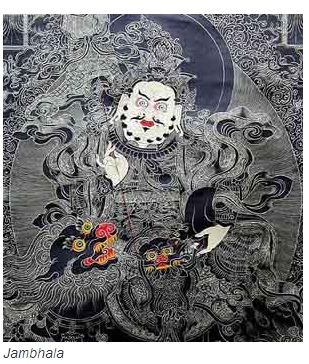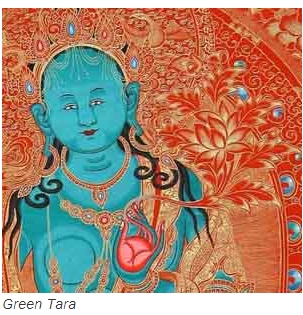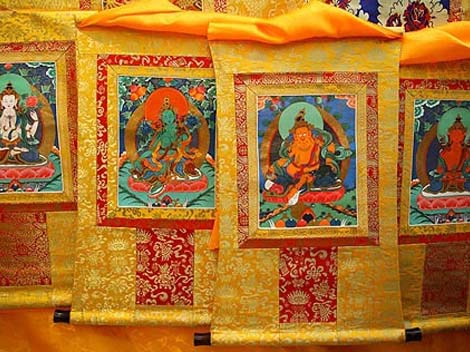
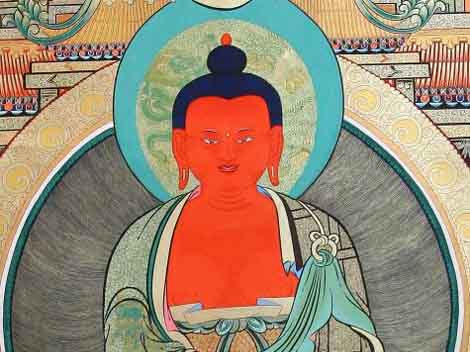
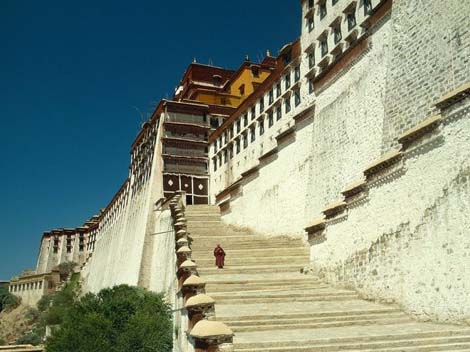
As handicraft works specific to Tibetan people, Thang-ka paintings refer to scrolled paintings mounted with satin fabric. Tibetan people mount these religious scrolled paintings with satin, then hang them up and worship them. In the Tibetan palaces, temples and the residential area or their manorial gardens, people are used to hanging up the Thang-ka. Nowadays, Thang-ka paintings are no longer as mysterious as before. Instead, they demonstrate to the whole world the exquisite techniques and wisdom of Tibetan people. Every stroke in Thang-ka paintings embodies the superb techniques of the artists as well as the respectful attitude towards Tibetan Buddhism. As Buddha images easiest to take along and worship, Thang-ka paintings are very useful in the religious sense. They are well-received both by numerous disciples and now by collectors.
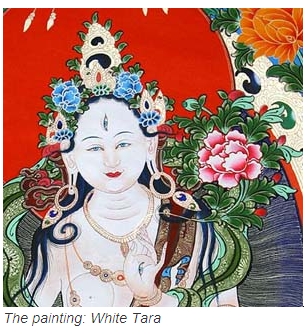
A couple of procedures have to be followed before a Thang-ka painting is finished. First, stitch a piece of bottom cloth to a wooden frame. Process the bottom cloth through a special technique and make it smooth, clean, bright and devoid of holes. After the bottom cloth dries up, draw the outline of the figure with charcoal sticks, and then color it. After the painting is finished, decorate the periphery of the bottom cloth with satins of varied colors. String the upper and lower ends with wood spools so that the painting will be easy to hang up. Then cover the painting with a piece of silk which is as big as it, and a mounted scrolled Thang-ka painting is completed.
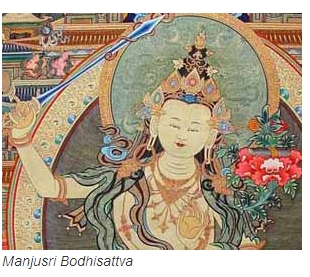
Pigment is very essential in making Thang-ka paintings bright and beautiful. The pigment for Thang-ka paintings is made from non-transparent natural minerals (kallaite, corals, gold, and silver) as well as plants. Then animal glue is added in proportion with oxgall. Thang-ka paintings made with such pigment will remain bright-colored even after hundreds of years.
You will sense the originality of the artist if you get down to appreciating an exquisite Thang-ka painting which is characterized by delicate brushwork and smart composition. Appreciating the images of Buddha helps purify one's soul.
At present, as a type of Tibetan Buddhist painting art, Thang-ka has finally developed into an art form which incorporates exquisite techniques, fine coloring, as well as a perfect combination of form and content. This achievement should be attributed to the unremitting efforts of innumerable generations of artists.
Source:
http://traditions.cultural-china.com/en/16Traditions3813.html
